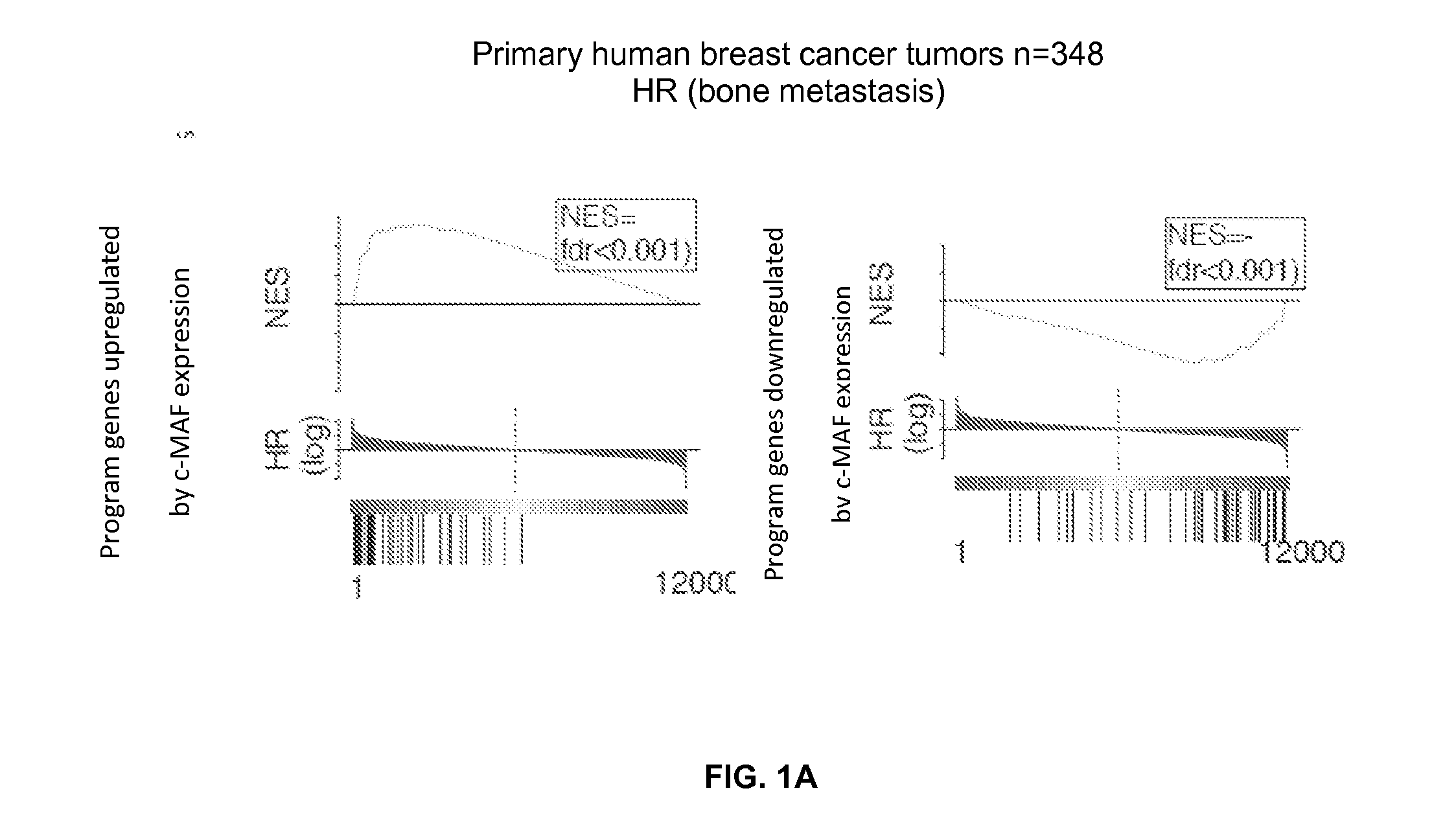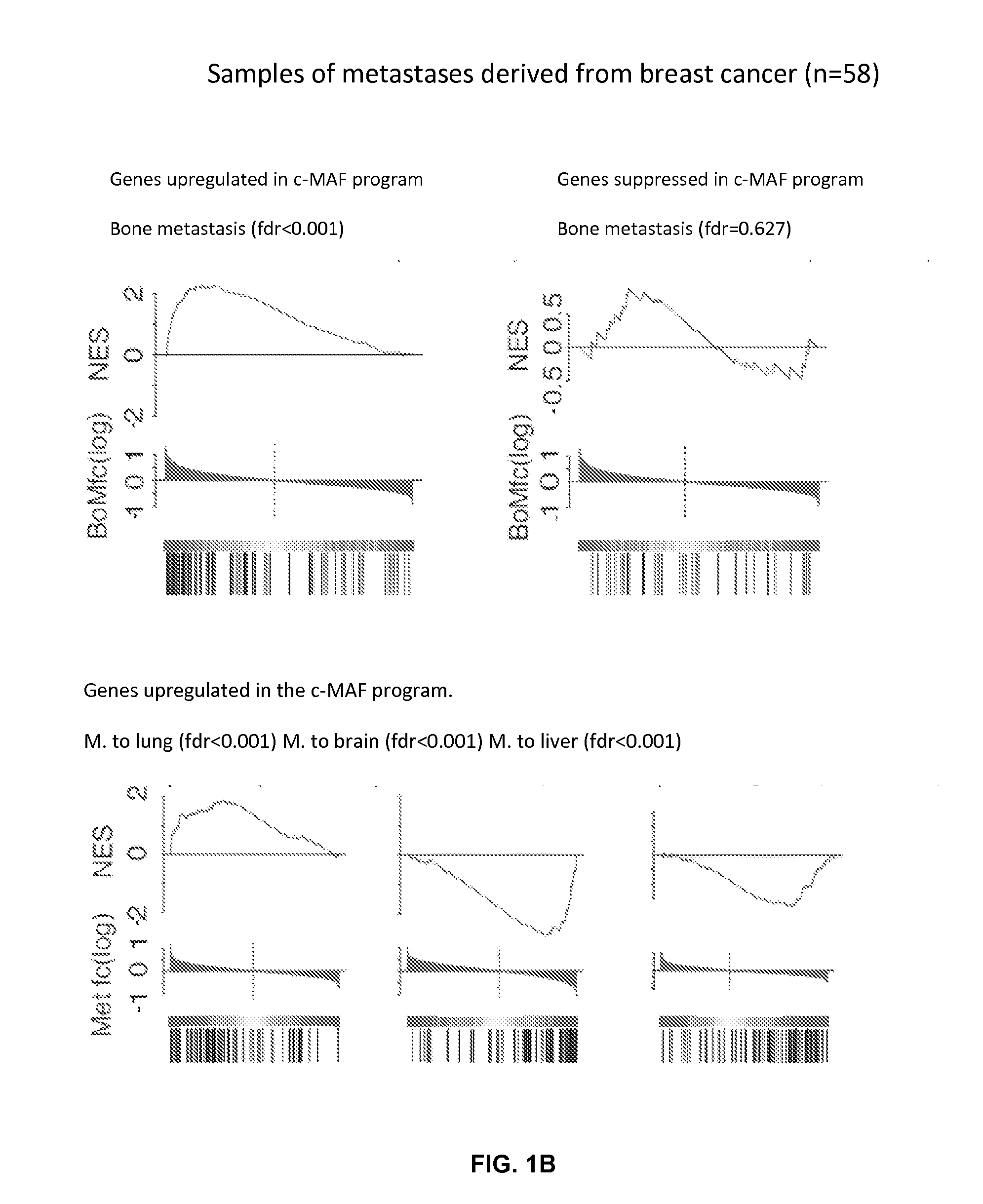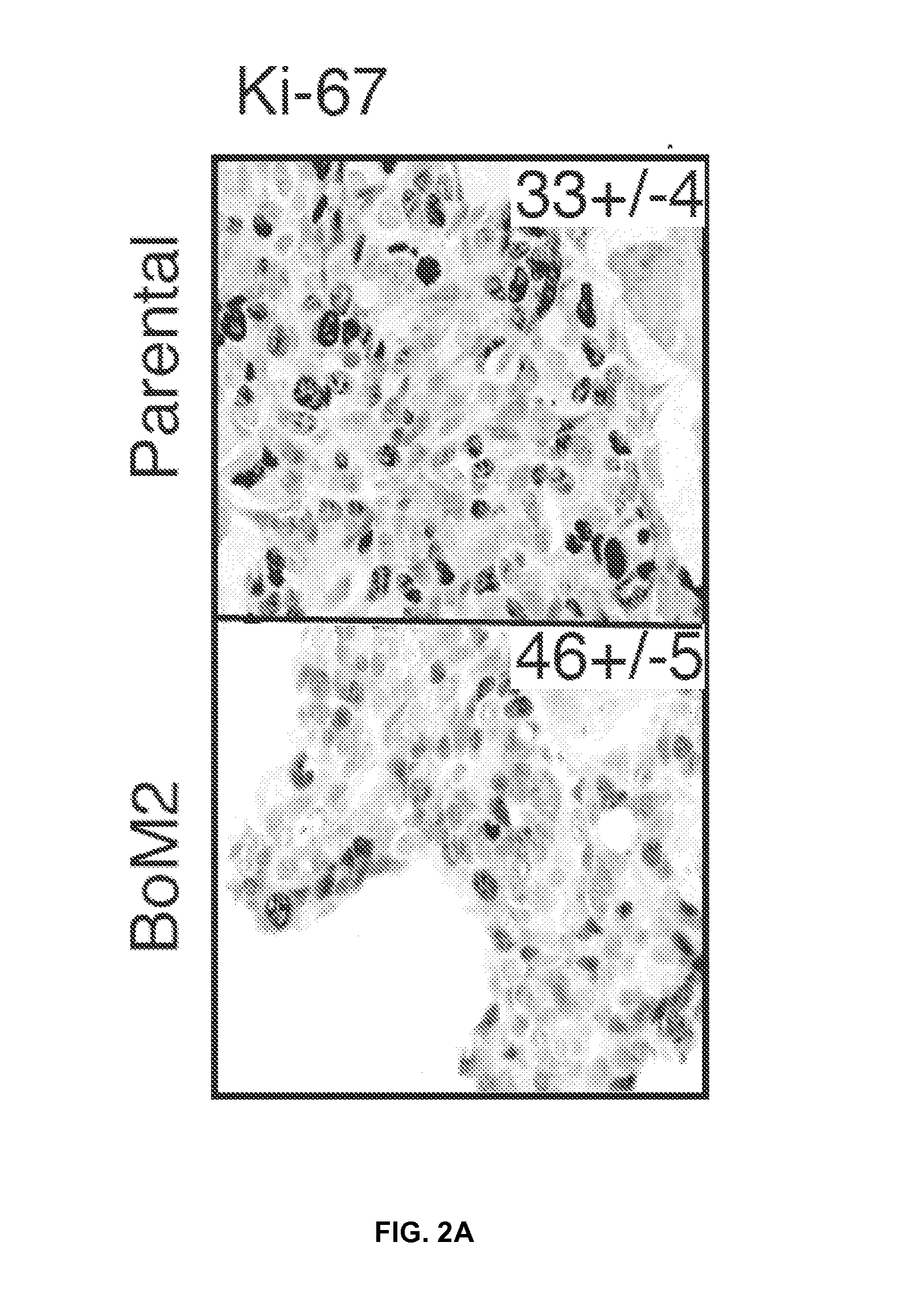Method for the diagnosis, prognosis, and tratment of cancer metastasis
a cancer metastasis and prognosis technology, applied in the field of cancer metastasis diagnosis, prognosis and treatment, can solve problems such as cell change, achieve the effects of increasing the expression level of c-maf, reducing the risk of metastatic cancer, and inhibiting expression
- Summary
- Abstract
- Description
- Claims
- Application Information
AI Technical Summary
Benefits of technology
Problems solved by technology
Method used
Image
Examples
example 1
Selection of Relevant Genes
[0270]An analysis was performed, the purpose of which was to select genes that express in a differential manner in cells derived from a single ER+ breast cancer cell line in response to changes in the levels of expression of c-MAF (Table 1, FIG. 1B). The genes and functions that were determinative of the bone metastasis program mediated by c-MAF were selected following the below criteria:[0271]i) Genes the expression of which in primary tumors is significantly correlated with the expression of c-MAF.[0272]ii) Genes whose expression is modified with the expression of c-MAF, either when c-MAF is over-expressed (long or short isoform) in MCF7 cells, or when the expression of c-MAF in highly metastatic bone cells derived from MCF7 expressing c-MAF is reduced, and[0273]iii) Genes that are correlated to the expression of MAF in primary tumors and in one of the mentioned cellular conditions in ii) are considered members of the bone metastatic program mediated by ...
example 2
The Therapeutic Value and Prognostic Value of Genes Enriched for the Development of Bone Metastasis
[0275]The genes enriched in bone metastasis through the experimental system for the selection of metastatic cell populations developed here were evaluated vis-a-vis two different databases containing the expression profiles and the clinical records of 560 primary breast cancer tumors and 58 metastases from patients suffering from breast cancer. These tumors are representative of all of the sub-types of breast cancer and localizations of metastases. Both databases and the related clinical records are available to the public (GSE 2603, 2034, 12276 and 14020).
[0276]The gene expression in ER+ primary tumors of the genes taken from bone metastases demonstrated a significant correlation with a recurrence in bones and was also correlated with metastasis to bone (FIG. 1A) but not with metastasis to other tissues (FIG. 1B).
example 3
In Vivo Functional Validation of the Members of the Program for Bone Metastasis Mediated by c-MAF
PTHLH Gene
[0277]The metastatic PTHLH gene, positive during prior analysis and directly correlated with the expression of c-MAF (Table 1 and FIG. 3), was functionally validated in a metastatic colonization trial in bones in an xenograft experimental model of breast cancer metastasis in mice. The standard approximations / approaches to validate the candidate gene to direct the process of metastasis were the samples of the loss of PTHLH function in low-metastatic cells that express c-MAF. The expression of the c-MAF gene was induced in cells that were moderately metastatic in bone, in vivo, MCF7, that present low levels of expression of the gene, c-MAF. The overexpression of c-MAF was responsible for the increase in the endogenous levels of the PTHLH gene (FIG. 3). In this context the activity of the cytokine PTHLH was then blocked using an antagonist peptide (FIG. 3).
[0278]In the process for...
PUM
| Property | Measurement | Unit |
|---|---|---|
| body weight | aaaaa | aaaaa |
| chemical | aaaaa | aaaaa |
| bioluminescent imaging | aaaaa | aaaaa |
Abstract
Description
Claims
Application Information
 Login to View More
Login to View More - R&D
- Intellectual Property
- Life Sciences
- Materials
- Tech Scout
- Unparalleled Data Quality
- Higher Quality Content
- 60% Fewer Hallucinations
Browse by: Latest US Patents, China's latest patents, Technical Efficacy Thesaurus, Application Domain, Technology Topic, Popular Technical Reports.
© 2025 PatSnap. All rights reserved.Legal|Privacy policy|Modern Slavery Act Transparency Statement|Sitemap|About US| Contact US: help@patsnap.com



